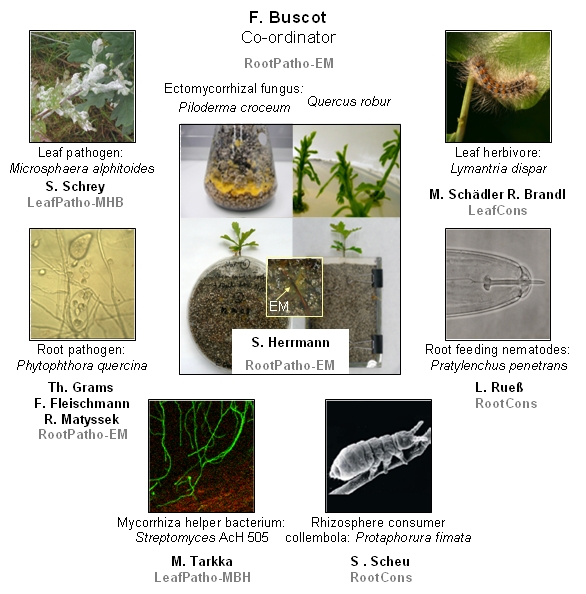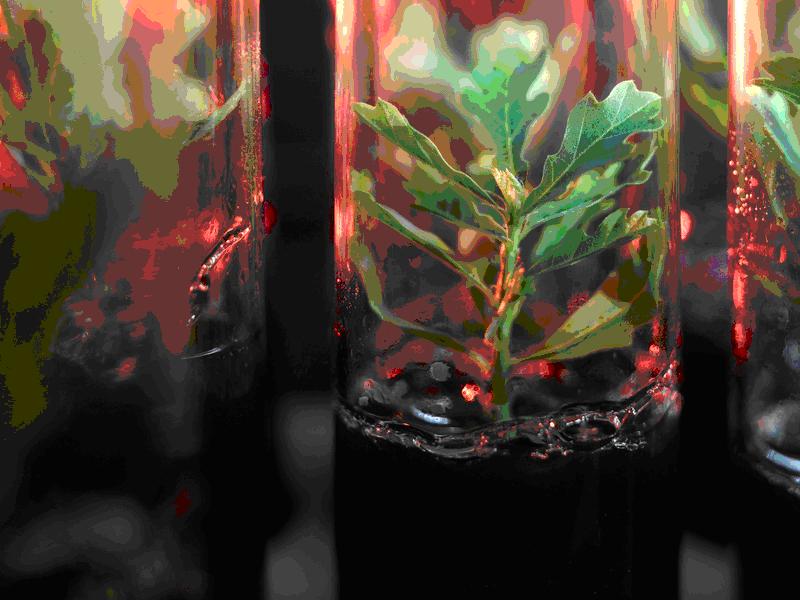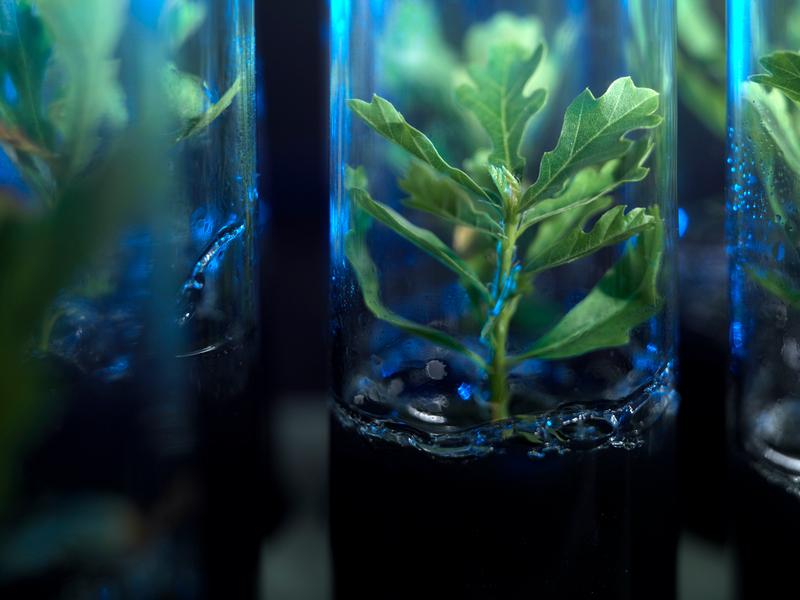Presentation of the Project
The new DFG Project TrophinOak relies on previous DFG projects of F. Buscot in particular within the research unit 1084 MolMyk in the frame of which a gnotobiotic system using rooted clonal microcuttings of oaks (Quercus robur L.) was established. The system served to investigate the formation and function of ectomycorrhiza with different fungi and especially with the basidiomycete Piloderma croceum. It allowed analyzing the impact of mycorrhizal symbiosis at different formation stages on plant morphology and development, physiology and gene regulation. On the basis of this optimized experimental model, a strong integrative strength of the project is the implementation of a common Joined Experimental Platform, JEP, (see below Project Part 1: RootPatho-EM). The JEP will allow comparisons between seven different types of trophic interactions and their combination in a standardized cultivation system in which similar molecular and ecophysiological analyses will be performed. The JEP will use an oak specific transcriptome contig reference bank to study differential gene expression. This reference bank will consist of assembled Roche/454 and Illumina RNA-Seq data.
Coordination: ![]()
![]() Francois Buscot and
Francois Buscot and ![]()
![]() Sylvie Herrmann
Sylvie Herrmann

The project TrophinOak implements two categories of aims.
The first principle aim corresponds to an experimentation common to the 4 project parts and relies on the use of the JEP to identify regulation processes in oaks facing different biotrophic interactions. This regulation will be analysed at the level of resource allocation (especially C and N) within the plant but also at the level of gene expression. We expect the JEP to result not only in the selection of important candidate genes, but also in the establishment of a specific contig bank OakContigDF159.1. Differential gene expression studies based on Illumina RNA-Seq reads will consider the different biotrophic interactions at the two phases of the plant rhythmic growth, i. e. root and shoot flushing. The contig bank and the detected differentially expressed genes shall also become monitoring tools for a phytometer system based on the field release of specimens of our oak clone along climatic and stress gradients for studying their impact on the behaviour of the plants and their multitrophic associates
The second category of aims groups experiments that are more specific to each project part. They are expected to also significantly contribute towards the foreseen follow-up Research Unit. The corresponding WPs consist of complex experiments in which more than two plant developmental stages are considered during biotrophic interactions or several biotrophic partners are co-inoculated.




